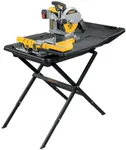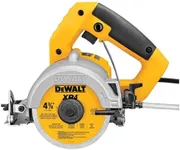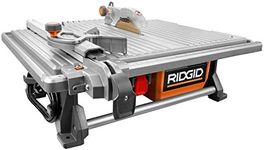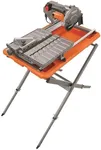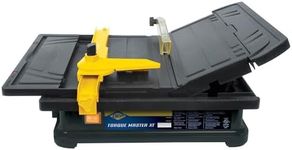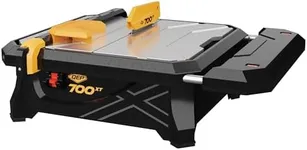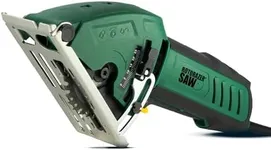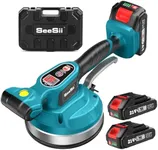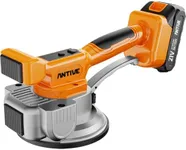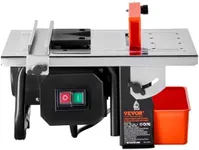Buying Guide for the Best Wet Tile Saws
When it comes to choosing a wet tile saw, it's important to understand the key features and specifications that will help you make the best decision for your needs. Wet tile saws are essential tools for cutting tiles with precision and ease, especially for larger projects. By understanding the different specifications, you can ensure that you select a saw that meets your requirements and provides the best performance for your tiling tasks.Blade SizeThe blade size of a wet tile saw determines the maximum depth and size of the tile it can cut. Common blade sizes range from 4 inches to 10 inches. Smaller blades (4-6 inches) are suitable for smaller tiles and more detailed work, while larger blades (7-10 inches) are better for cutting larger tiles and thicker materials. Choose a blade size based on the type of tiles you will be working with most frequently.
Motor PowerMotor power, measured in horsepower (HP) or amps, affects the cutting performance and efficiency of the wet tile saw. Higher motor power allows for smoother and faster cuts, especially through tougher materials. For light to medium tasks, a motor with 1-1.5 HP or 5-7 amps is usually sufficient. For heavy-duty or professional use, consider a motor with 2 HP or more. Select motor power based on the intensity and frequency of your tile cutting projects.
Cutting CapacityCutting capacity refers to the maximum size of the tile that the saw can handle, both in terms of length and thickness. This includes the maximum rip cut (straight cut) and diagonal cut dimensions. If you plan to work with larger tiles, ensure the saw has a sufficient cutting capacity to accommodate them. For standard home projects, a saw with a rip cut capacity of 18-24 inches and a diagonal cut capacity of 12-18 inches is typically adequate.
Water Management SystemA good water management system is crucial for cooling the blade and reducing dust while cutting. This system typically includes a water reservoir, pump, and nozzles to direct water onto the blade. Efficient water management helps prolong the blade's life and ensures cleaner cuts. Look for a saw with an easy-to-fill reservoir and adjustable water flow. If you plan to use the saw frequently, a more advanced water system with better control and filtration may be beneficial.
PortabilityPortability is an important factor if you need to move the saw between job sites or storage areas. Wet tile saws can range from compact, lightweight models to larger, more stationary units. Consider the weight and design of the saw, including features like foldable stands or wheels for easier transport. For occasional home use, a lighter, more portable saw may be sufficient, while professional users might prefer a more robust, stationary model for stability and durability.
Accuracy and AdjustabilityAccuracy and adjustability features, such as adjustable fences, miter gauges, and laser guides, help ensure precise cuts. These features are particularly important for detailed or intricate tile work. Look for a saw with a sturdy, adjustable fence and clear measurement markings. Laser guides can also be helpful for aligning cuts. Choose a saw with the level of accuracy and adjustability that matches the complexity of your projects.



